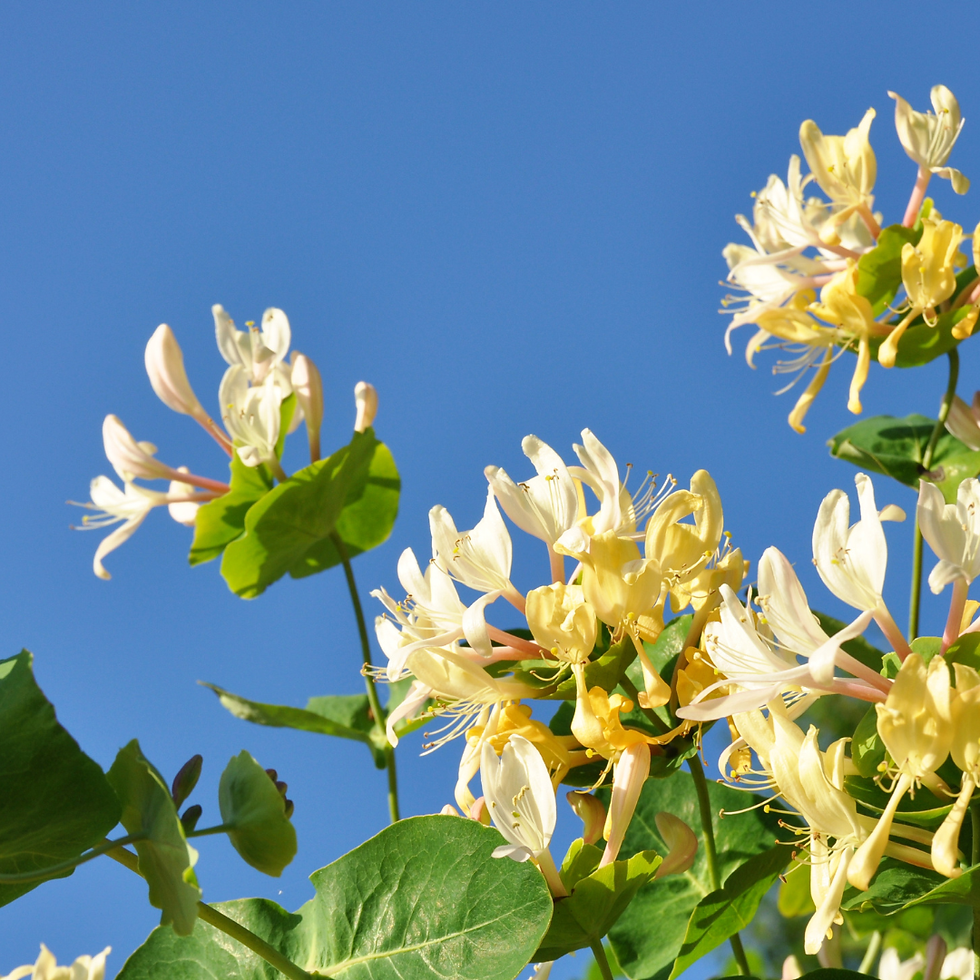Common Invasive Plants To Watch Out For During Summer
- CLM

- Jun 25, 2024
- 2 min read
Invasive plant species can wreak havoc on local ecosystems, threatening biodiversity and even impacting infrastructure. As summer unfolds, certain invasive plants become particularly pervasive, requiring specific management strategies to control their spread. At Crawford Land Management, we understand the importance of preserving native habitats while combating these invaders effectively.
1. Japanese Knotweed (Fallopia japonica)
Description: Known for its tall, bamboo-like stems and heart-shaped leaves, Japanese Knotweed can quickly form dense thickets. It blooms with small white or cream-colored flowers.
Impact: This plant outcompetes native species and poses a risk to structures due to its aggressive root system.
Management: Effective management often involves stem injection application of herbicide and routine maintenance visits..

2. Oriental Bittersweet (Celastrus orbiculatus)
Description: A woody vine with glossy, round leaves and distinctive orange-yellow berries in the fall.
Impact: It climbs and strangles trees and shrubs, often leading to tree death if not managed early.
Management: Methods include hand-pulling young plants, cutting vines, and using systemic herbicides on cut stems.

3. Multiflora Rose (Rosa multiflora)
Description: This dense, thorny shrub produces white or pink flowers and red rose hips.
Impact: It forms impenetrable thickets that crowd out native vegetation.
Management: Regular cutting and targeted herbicide applications are essential for control.

4. Phragmites Australis (replacing purple loosestrife)
Description: Characterized by tall, feathery flower plumes and robust stems, Phragmites Australis is a perennial grass that spread aggressively in wetlands and along waterways.
Impact: It displaces native vegetation and alters wetland ecosystems, affecting wildlife habitats.
Management: Management strategies typically involve cutting and herbicide treatments tailored to its growth stage, combined with restoration efforts to promote native plat recovery

5. Morrow’s Honeysuckle (replacing Japanese Barberry)
Description: Recognized by its fragrant white or pale yellow flowers and red berries, Morrow’s honeysuckle is a deciduous shrub that can grow rapidly and form dense thickets.
Impact: This invasive species shades out native plants and alters habitats crucial for local wildlife.
Management: Effective control methods often include targeted herbicide applications and regular monitoring to prevent re-establishment.

At Crawford Land Management, we employ a comprehensive approach to invasive plant management tailored to each species and site conditions. Our expertise includes:
Assessment and Planning: We conduct thorough assessments to identify invasive species and determine the most effective management strategies.
Control Methods: Utilizing mechanical methods such as cutting and pulling as well as chemical methods such as targeted herbicide applications to ensure long-term suppression.
Environmental Considerations: We prioritize environmentally sensitive practices, such as using the appropriate herbicide for a site’s conditions and utilizing a direct-stem application method whenever feasible to minimize disruption to native ecosystems while restoring balance.
Monitoring and Maintenance: Continuous monitoring and follow-up treatments are crucial to prevent re-establishment and ensure the success of our management efforts.

Managing invasive plants is a critical aspect of preserving biodiversity and maintaining healthy ecosystems. At CLM, we are committed to employing effective, environmentally conscious strategies to mitigate the impact of invasive species. Contact us today to learn more about how we can help protect your property and the surrounding environment from invasive plants this summer.

Comments